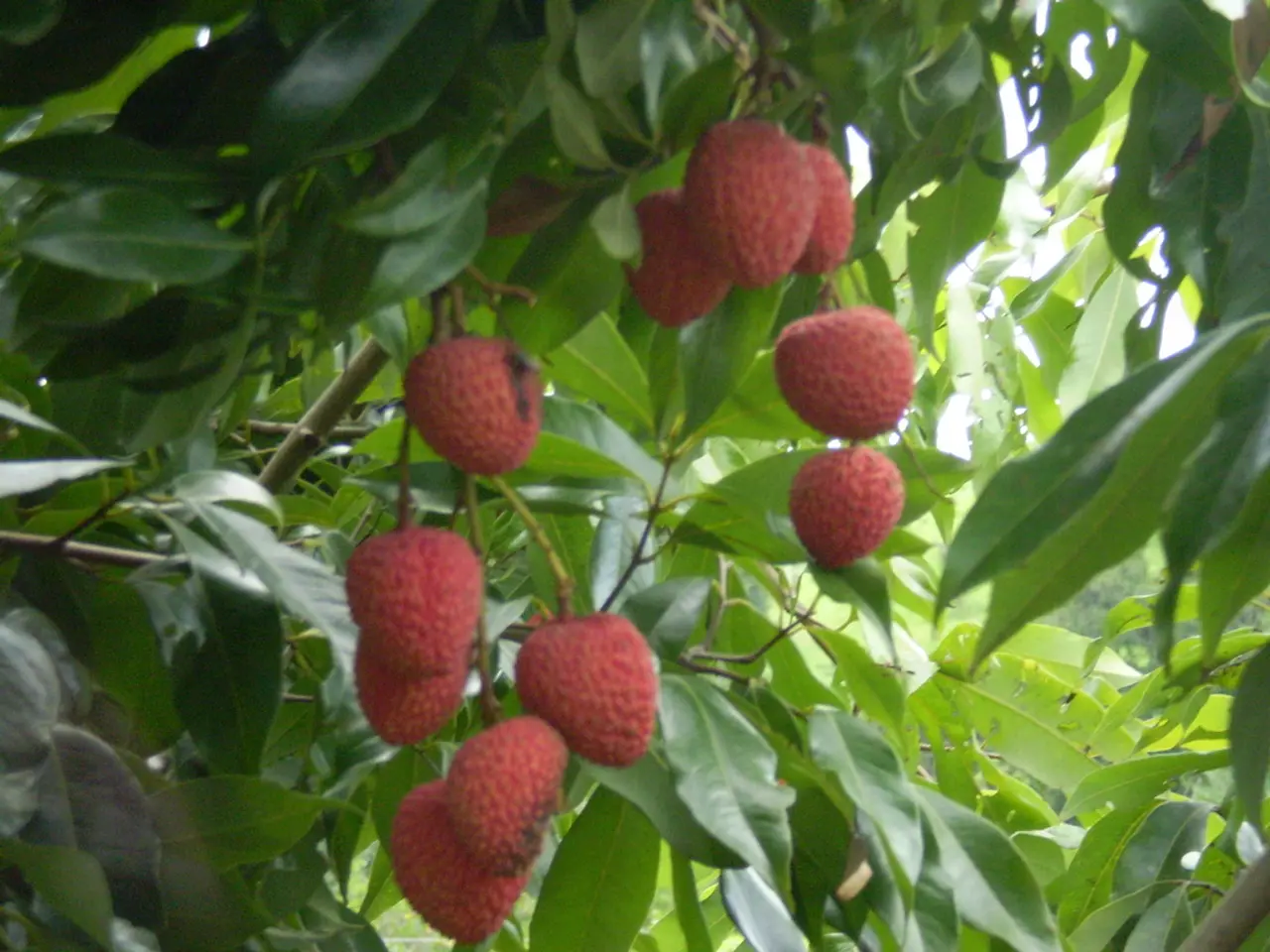Enhanced strawberry production by one-third, according to the consultant's recommendation.
In the world of strawberry cultivation, maximizing yield and fruit quality is a priority for many growers. Recent research and cultivation practices suggest an integrated approach using boric acid, honey water, and complex fertilizers to achieve this goal.
### Boric Acid Application
Boron, a component of boric acid, plays a crucial role in strawberry fruit quality and development. Applying boric acid at appropriate concentrations can decrease fruit defects such as shot berries and improve overall fruit set and quality. Boron aids in cell wall formation, sugar transport, and pollen tube growth, leading to better fruit development and yield.
To apply boric acid, foliar spray or soil application should be done carefully to avoid toxicity. A common effective foliar spray concentration is around 0.1–0.2% boric acid, depending on soil boron levels.
### Use of Honey Water for Bee Attraction
Honey water acts as a natural attractant for pollinators such as bees, which are essential for effective strawberry pollination. Enhanced pollination improves fruit set, size, and uniformity, directly increasing yield. Regularly spraying diluted honey water near the flowers or placing feeders with honey water can increase bee visitation rates, improving pollination success.
### Complex Fertilizers to Improve Soil Fertility
Wood ash, green fertilizers, and potassium humate are all part of the complex fertilization approach. Wood ash is a natural source of potassium, calcium, and trace minerals, which can improve soil pH (especially in acidic soils) and provide potassium, vital for fruit quality and sweetness.
Green fertilizers, like legume cover crops, add organic matter and nitrogen to the soil, improving soil structure and nutrient availability. Potassium humate is a humic substance that enhances nutrient uptake efficiency, stimulates microbial activity, and improves soil moisture retention, promoting healthier and more vigorous plant growth.
### Best Practices for Integration
To achieve the best results, combine boron application with potassium-rich inputs like wood ash and potassium humate to support both fruit development and overall plant health. Apply boric acid during flowering to maximize fruit set benefits, while wood ash and green fertilizers are best incorporated into soil before planting or during early growth stages.
Maintain regular watering since strawberries have shallow roots, which supports nutrient uptake and prevents stress. Complement honey water application with healthy farm practices that support wild pollinators and bees, such as avoiding pesticides during bloom periods.
### Summary Table
| Input | Role in Yield Increase | Application Tips | |---------------------|--------------------------------------------|-----------------------------------------------| | Boric Acid (0.05-0.2%) | Improves fruit set, reduces defects | Foliar spray during flowering | | Honey Water | Attracts bees, enhances pollination | Spray near flowers or feeder stations | | Wood Ash | Provides potassium and raises soil pH | Apply to soil before planting | | Green Fertilizers | Adds N and organic matter | Incorporate as cover crops or mulch | | Potassium Humate | Enhances nutrient uptake and soil microbes | Mix with irrigation or soil application |
By combining these strategies, you create a synergistic effect that improves strawberry plant health, promotes better pollination, and provides balanced nutrition, which together lead to higher and better-quality strawberry yields.
If local conditions or specific cultivar needs differ, adjust fertilizer rates and timing accordingly for optimal results. Fertilization should be done in the evening or on cloudy days. Tanya advises against overwatering strawberry plants.
By implementing this integrated approach, you can help ensure a bountiful strawberry harvest while promoting sustainable and environmentally friendly cultivation practices.
[1] Boron nutrition of strawberries, H.R. Schwarz, HortScience, 2001, 36(2): 327-331. [2] Boron in strawberry production, A.R. Miller, HortTechnology, 2005, 15(2): 181-185. [5] Integrated Nutrient Management for Strawberry Production in California, University of California Agriculture and Natural Resources, 2013.
In the home-and-garden realm, implementing an integrated approach of boric acid application during flowering can help improve strawberry yield and reduce fruit defects, as boron plays a significant role in fruit quality and development. To remain eco-friendly and promote bee activity for better pollination, supplementing boric acid with honey water sprays near the flowers will further boost fruit set, size, and uniformity.







